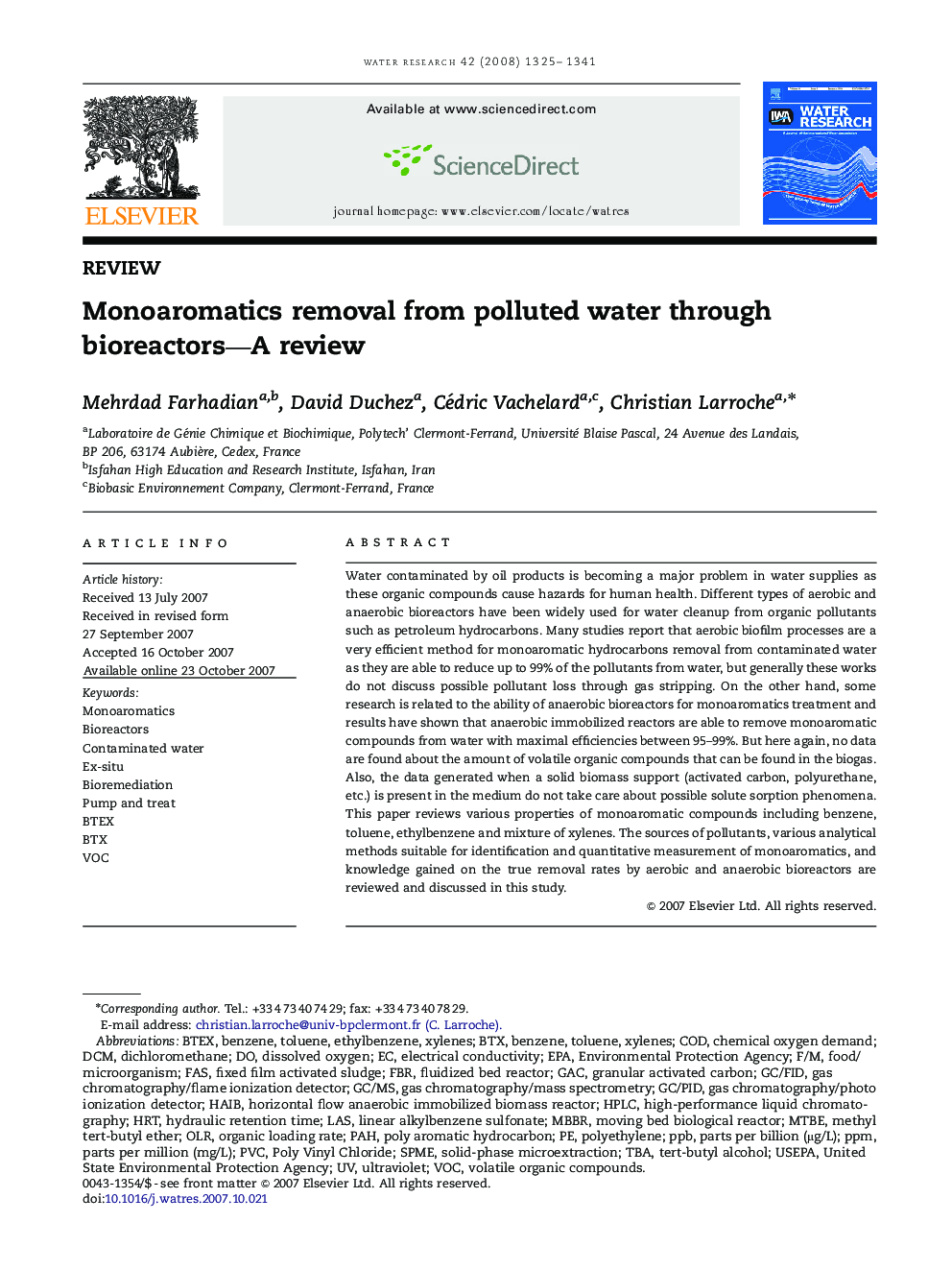| Article ID | Journal | Published Year | Pages | File Type |
|---|---|---|---|---|
| 4485022 | Water Research | 2008 | 17 Pages |
Water contaminated by oil products is becoming a major problem in water supplies as these organic compounds cause hazards for human health. Different types of aerobic and anaerobic bioreactors have been widely used for water cleanup from organic pollutants such as petroleum hydrocarbons. Many studies report that aerobic biofilm processes are a very efficient method for monoaromatic hydrocarbons removal from contaminated water as they are able to reduce up to 99% of the pollutants from water, but generally these works do not discuss possible pollutant loss through gas stripping. On the other hand, some research is related to the ability of anaerobic bioreactors for monoaromatics treatment and results have shown that anaerobic immobilized reactors are able to remove monoaromatic compounds from water with maximal efficiencies between 95–99%. But here again, no data are found about the amount of volatile organic compounds that can be found in the biogas. Also, the data generated when a solid biomass support (activated carbon, polyurethane, etc.) is present in the medium do not take care about possible solute sorption phenomena. This paper reviews various properties of monoaromatic compounds including benzene, toluene, ethylbenzene and mixture of xylenes. The sources of pollutants, various analytical methods suitable for identification and quantitative measurement of monoaromatics, and knowledge gained on the true removal rates by aerobic and anaerobic bioreactors are reviewed and discussed in this study.
